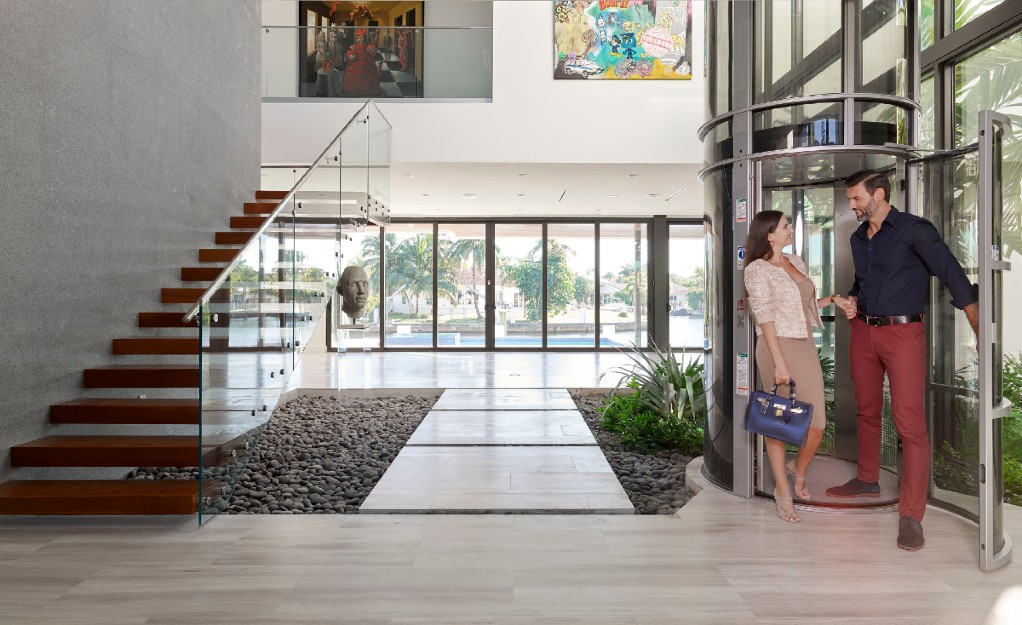Residential wheelchair elevators are important in homes made for wheelchair users. They help people with disabilities move around their houses easily. These elevators are commonly found in private homes and make going between floors smooth for those who have trouble moving.
Evolution of Accessibility Solutions

The evolution of accessibility solutions has been a dynamic journey. It has come with significant advancements in technology, design, and societal attitudes towards disability inclusion. Historically, individuals with disabilities faced considerable challenges in accessing public spaces. They even face problems in transportation, and even their own homes due to architectural barriers and societal stigma. However, concerted efforts by advocacy groups, policymakers, and innovators have led to transformative changes in the accessibility landscape.
Historical Context
In the past, architectural designs predominantly focused on functionality and aesthetics, often overlooking the diverse needs of individuals with disabilities. Staircases, narrow doorways, and lack of ramps were common features in residential and commercial buildings. They are posing insurmountable obstacles for wheelchair users and individuals with mobility impairments. As a result, many people with disabilities were confined to the margins of society. They excluded from essential services, employment opportunities, and community participation.
Legal Mandates and Standards
The Americans with Disabilities Act (ADA) in the United States and similar laws worldwide were game-changers for accessibility and fairness. They set rules to stop unfair treatment and ensure everyone can use public places equally. These laws also encouraged designs that work for everyone. Plus, global guidelines like ISO 21542 helped create standards for making spaces easy to use for everyone, no matter their abilities. Together, these laws and guidelines made a big difference in making the world more inclusive.
Technological Innovations
Technology has made a huge difference in making things more accessible. It is evident especially with devices and tools that help people with disabilities. For example, there are motorized wheelchairs that have navigation systems, making it easier for people to get around. Also, smart home systems can help with everyday tasks like turning on lights or adjusting the temperature. These advancements give people with disabilities more independence and make their lives easier. And, there’s even more exciting stuff on the horizon, like using artificial intelligence and robotics to make things even better for people with disabilities.
Shift Towards Universal Design
A fundamental paradigm shift has occurred in the approach to accessibility. It is moving away from a “one-size-fits-all” mentality towards universal design principles that prioritize inclusivity, flexibility, and user-centered solutions. Universal design emphasizes creating products, environments, and systems. They are usable by people of all ages, abilities, and backgrounds without the need for adaptation or specialized design features. By adding accessibility considerations into the design process from the outset, universal design brings greater equity, dignity, and usability for everyone.
Impact on Residential Spaces
In home design, accessibility changes have made a big impact on how houses are planned, built, and updated. Ideas like adaptable housing and visitability standards mean more people are thinking. They think about how to make homes easier for everyone to use. This includes considering the needs of people with different abilities and making sure homes can change as people’s abilities change. Wheelchair elevators in homes show this shift towards inclusivity. They are doing so by giving homeowners a way to move around easily, whether it’s for themselves or someone they care about.
Meeting Diverse Needs
One of the remarkable aspects of residential wheelchair elevators is their ability to cater to diverse needs and preferences. Whether it’s a compact home with limited space or a sprawling mansion with multiple levels, these elevators can be customized to fit various architectural designs and accommodate different spatial constraints. This versatility ensures that homeowners can seamlessly integrate accessibility features into their living spaces without compromising on aesthetics or functionality.
Enhancing Quality of Life
Wheelchair elevators in homes do more than just make it easier to move around. They make a big difference in how people with disabilities live their lives. These elevators give them the freedom to go anywhere in their home without any limitations. This sense of freedom boosts their independence and dignity. Plus, it helps them feel more included in social activities like hosting parties or spending time with family. With wheelchair elevators, people with disabilities can fully participate in all aspects of life without being held back by architectural barriers.
Safety and Reliability
Safety and reliability are paramount considerations in the design and installation of residential wheelchair elevators. Manufacturers adhere to rigorous safety standards to ensure that these elevators operate smoothly, securely, and with minimal risk of accidents or malfunctions. From sturdy construction to advanced safety features such as emergency brakes and backup power systems, every aspect is meticulously engineered to prioritize user safety and peace of mind.
Integration with Smart Home Technology
The integration of residential wheelchair elevators with smart home technology represents a significant advancement in accessibility solutions. By incorporating features such as remote monitoring, voice-activated controls, and smartphone connectivity, these elevators offer unparalleled convenience and ease of use. Users can summon the elevator, monitor its status, and even troubleshoot minor issues using their mobile devices, thereby streamlining the user experience and ensuring seamless integration into modern lifestyles.
Overcoming Architectural Challenges
In older homes or buildings with limited space, retrofitting residential wheelchair elevators may pose unique challenges. However, innovative design solutions and advancements in elevator technology have made it increasingly feasible to overcome these obstacles. Through creative installation techniques and customizable configurations, even the most challenging architectural constraints can be addressed, allowing homeowners to enjoy the benefits of accessibility without extensive renovations or structural modifications.
Financial Considerations
While the installation of residential wheelchair elevators represents a significant investment, it’s essential to consider the long-term benefits and cost savings they entail. Beyond enhancing the value and marketability of the property, these elevators can potentially reduce the need for costly home modifications or assisted living arrangements. Moreover, many jurisdictions offer financial assistance programs, tax incentives, or insurance discounts to support accessibility initiatives, making the upfront costs more manageable for homeowners.
Technical Aspects of Wheelchair Accessible Home Elevators
Types of Residential Wheelchair Elevators
| Elevator Type | Description |
|---|---|
| Hydraulic | Utilizes hydraulic power to move the elevator car, suitable for homes with higher weight capacity requirements. |
| Traction | Relies on a system of cables and counterweights for operation, ideal for homes with limited space or noise sensitivity concerns. |
| Pneumatic Vacuum | Uses pneumatic pressure changes to move the elevator car, offering a sleek and space-saving design for modern homes. |
Key Features and Specifications
| Feature | Description |
|---|---|
| Weight Capacity | Typically ranges from 500 to 1000 pounds, depending on the elevator type and configuration. |
| Door Configurations | Options include side-entry, front-entry, and through-car configurations to accommodate different floor layouts and user preferences. |
| Safety Features | Includes emergency brakes, door interlocks, battery backup systems, and sensors to detect obstructions and ensure safe operation at all times. |
| Dimensions and Space Requirements | Vary based on elevator type and model, with options available for both standard and compact installations to suit diverse architectural layouts. |
Conclusion
In conclusion, residential wheelchair elevators serve as indispensable tools for promoting accessibility, independence, and inclusivity in homes. By seamlessly integrating into the living environment and overcoming architectural barriers, these elevators empower individuals with disabilities to lead fulfilling and autonomous lives. As technology continues to advance and awareness of accessibility issues grows, the future holds promising developments in residential design, ensuring that every home becomes a welcoming and inclusive space for all.








